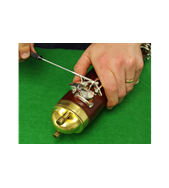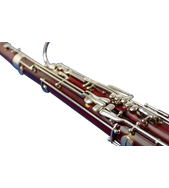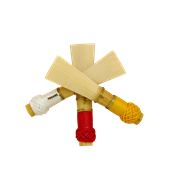A Quick Guide to Reed Care and Adjustment
September 29th, 2022

Your reeds are made from cane, a natural material which changes over time. Here are some tips on how to get the best tone and longest life out of your reeds.
Reed soaking
New reeds and reeds which haven’t been played for some time will dry out. As the cane dries it shrinks, causing the wires to loosen and affecting how the reed plays. It helps to soak them in tepid water for a few minutes before use.
Putting the reed on the crook
Put the reed on the crook in your preferred position without twisting. The twisting motion can cause the blades to become misaligned.
Reed plays too freely?
If your reed plays too freely try closing the tip of the blades slightly. Do this by squeezing the second wire (furthest from the tip) from the sides and/or the first wire from above and below. Tightening the wires slightly may help as well.
Also, try lightly scraping the sides of the reed from about a third of the way back from the tip.
This is not reversible, so attempt it only if the other options don’t work for you.
Reed not free enough?
If your reed isn’t free enough try opening the tip of the blades slightly. Do this by undertaking the opposite procedure from above - squeeze the second wire from the top and bottom, squeeze the first wire from the sides and/or loosen the wires slightly. You can also try lightly scraping the reed’s tip and possibly the spine too.
Make small adjustments each time
It is best to make very small changes at a time, visually checking the effect and play-testing the reed to assess the outcome. With experience you will learn how much to adjust before play-testing.
Reed adjusting kit
These methods for adjusting reeds require some basic hand tools - take a look at our reed adjusting kit and reed pliers!
For more in-depth guidance on adjusting reeds, take a look at this article: Bassoon reeds - how to adjust them




